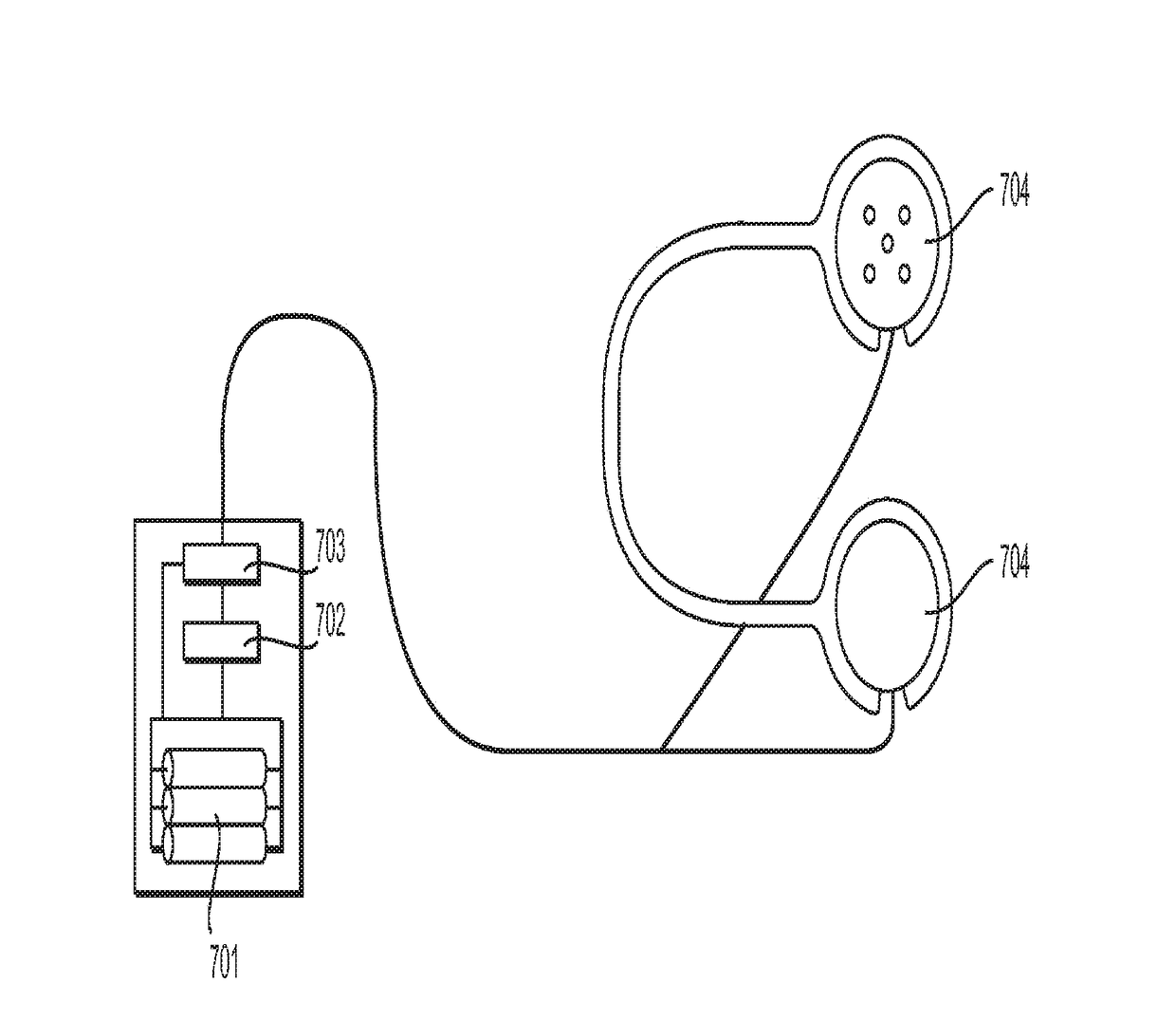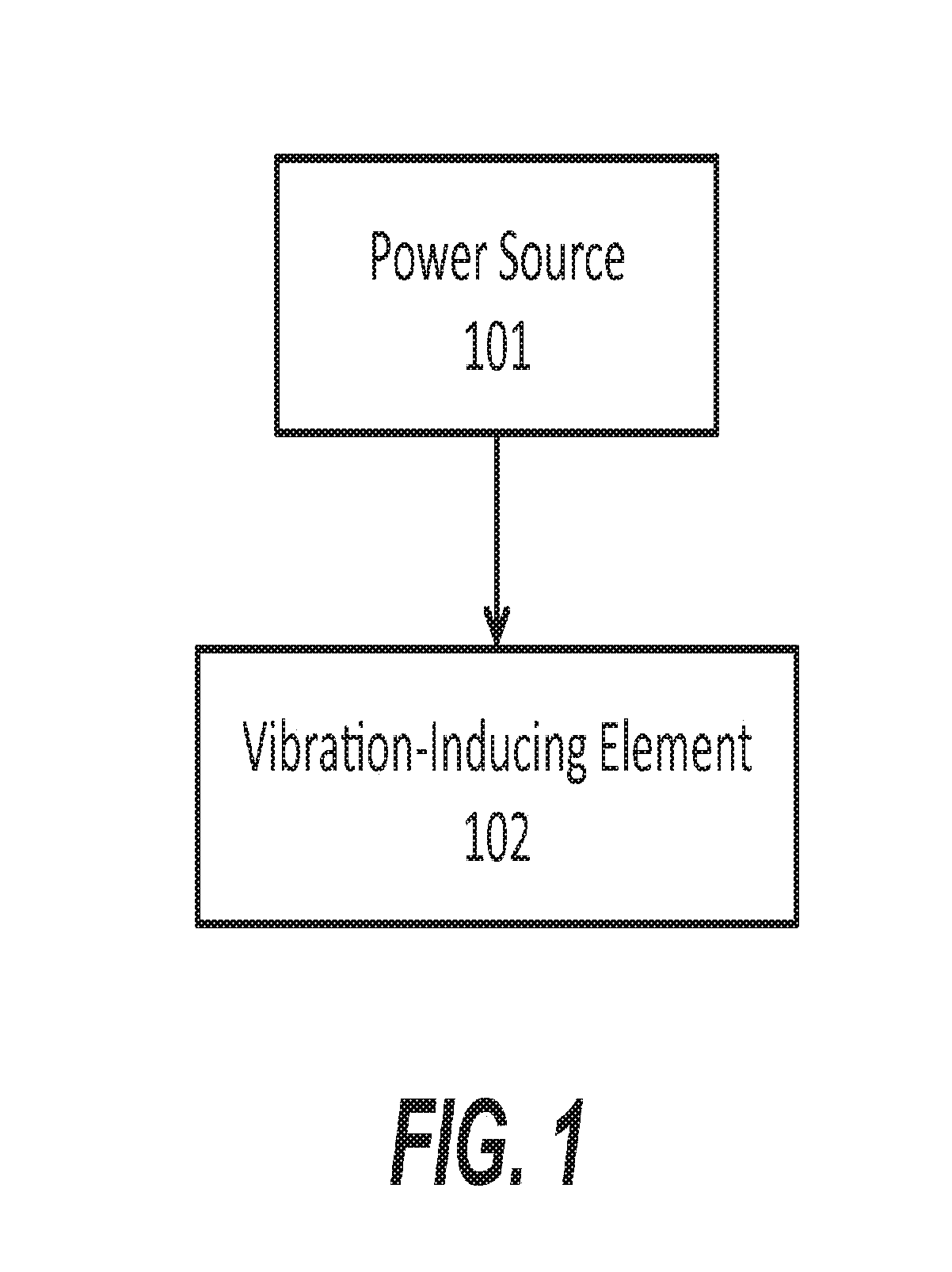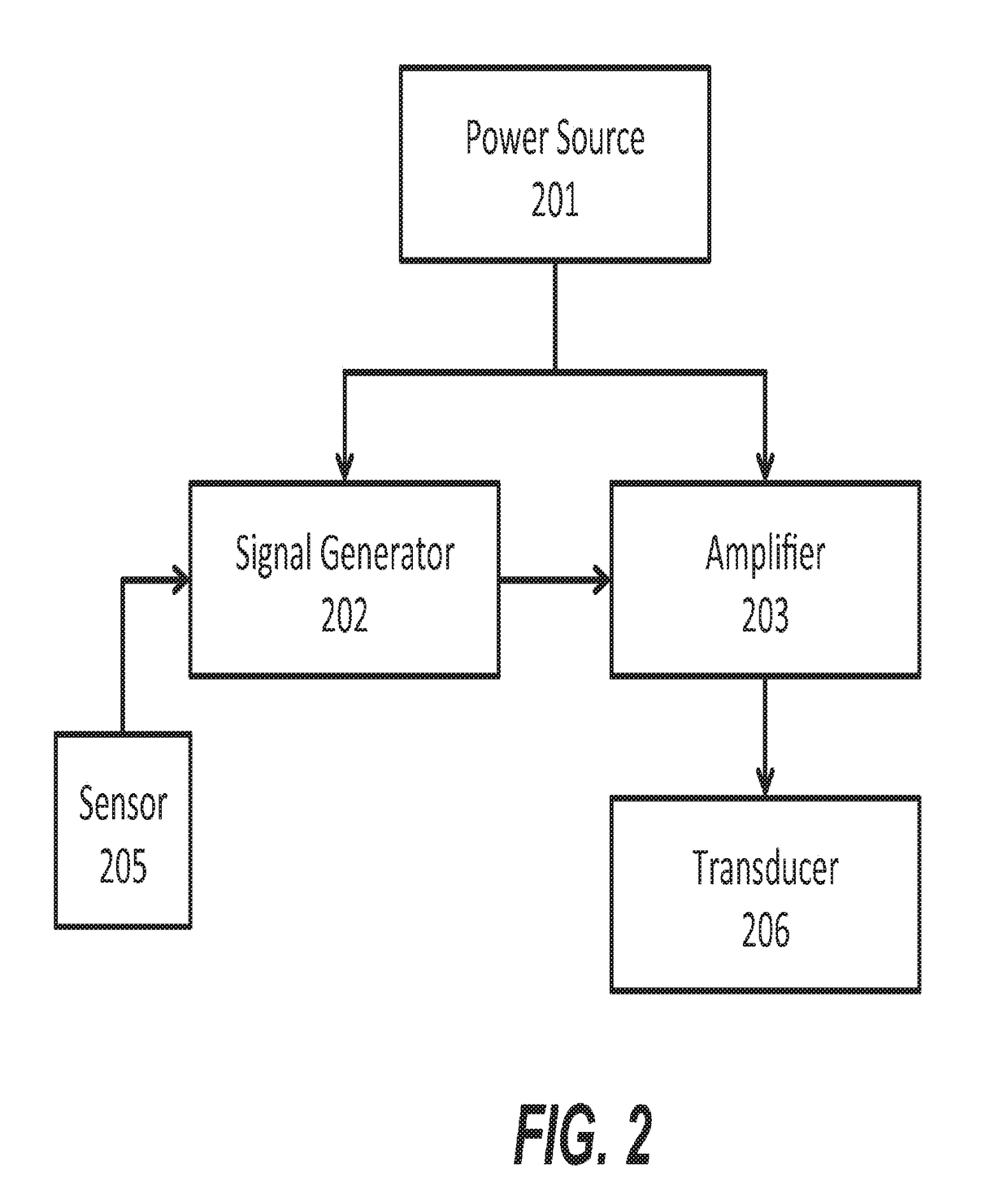Device for mitigating motion sickness and other responses to inconsistent sensory information
a technology of sensory information and sensory input, which is applied in the field of systems, devices and methods for mitigating motion sickness, vertigo, vestibular migraines, and loss of consciousness, can solve the problems that the “noisy” signal of the vestibular system cannot be properly interpreted by the brain, and reduce the likelihood that an individual may experience resulting detrimental physiological effects
- Summary
- Abstract
- Description
- Claims
- Application Information
AI Technical Summary
Benefits of technology
Problems solved by technology
Method used
Image
Examples
Embodiment Construction
[0016]Embodiments of the present invention will be described with reference to the accompanying drawings, wherein like parts are designated by like reference numerals throughout, and wherein the leftmost digit of each reference number refers to the drawing number of the figure in which the referenced part first appears.
[0017]In the context of the embodiments of the invention, the term “infrasound” typically includes vibrations at frequencies between 0 Hz and 20 Hz, but may also include vibrations at frequencies from 10 Hz to 30 Hz.
[0018]In the context of the embodiments of the invention, the term “audible” may comprise frequencies of vibrations detectable by an average human or mammalian ear at typical everyday intensities. For an adult human ear, “audible” typically includes vibrations at frequencies between 20 Hz and 20,000 Hz. The audible range for non-human mammals can include sounds in the infrasound range, from 10 Hz up to 20 Hz (e.g., for moles and elephants), as well as soun...
PUM
 Login to View More
Login to View More Abstract
Description
Claims
Application Information
 Login to View More
Login to View More - R&D
- Intellectual Property
- Life Sciences
- Materials
- Tech Scout
- Unparalleled Data Quality
- Higher Quality Content
- 60% Fewer Hallucinations
Browse by: Latest US Patents, China's latest patents, Technical Efficacy Thesaurus, Application Domain, Technology Topic, Popular Technical Reports.
© 2025 PatSnap. All rights reserved.Legal|Privacy policy|Modern Slavery Act Transparency Statement|Sitemap|About US| Contact US: help@patsnap.com



